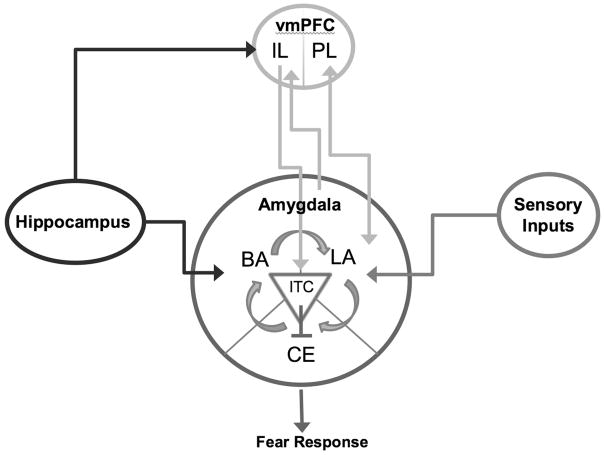Figure 1.
A simplified model of the neurocircuitry supporting fear learning and regulation. Fear conditioning yields an association between a conditioned stimulus (CS) and the unconditioned stimulus (US) that is maintained within the lateral nucleus of the amygdala (LA) and drives fear expression via the central nucleus of the amygdala (CE). Following fear learning, reciprocal connections between the LA and the prelimbic (PL) subregion of the ventromedial prefrontal cortex (vmPFC) are also involved in the sustained expression of fear. During fear extinction, connections are established between the infralimbic (IL) subregion of the vmPFC and the inhibitory intercalated (ITC) cell masses, which inhibit activity in the CE. When extinction memories are retrieved, these connections are activated, decreasing fear expression. The IL and PL also inhibit one another, mediating a competition between fear and extinction memory for behavioral control. Contextual modulation of extinction expression is mediated by projections from the hippocampus to the vmPFC and the amygdala. Adapted, with permission, from Casey et al.39

